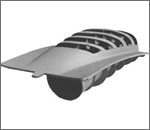Magnesium is recognized as the easiest of structural metals to machine and is the standard of the cutting tool industry when comparing machinability of metals. The low power requir

ements for machining magnesium alloys permit the use of deeper cuts and higher feed rates, thus permitting fast and efficient machining when compared to other metals. Magnesium alloys also normally produce well-broken chips, which are easy to handle.
(Magnesia, district in Thessaly) Compounds of magnesium have long been known. Black recognized magnesium as an element in 1755. Davy isolated it in 1808 and Bussy prepared it in coherent form in 1831. Magnesium is the eighth most abundant element in the earth's crust. It does not occur uncombined, but is found in large deposits in the form of magnesite, dolomite, and other minerals.
The metal is now principally obtained in the U.S. by electrolysis of fused magnesium chloride derived from brines, wells, and sea water.
Magnesium is a light, silvery-white, and fairly tough metal. It tarnishes slightly in air, and finely divided magnesium readily ignites upon heating in air and burns with a dazzling white flame.
Uses include flashlight photography, flares, and pyrotechnics, including incendiary bombs. It is one third lighter than aluminum, and in alloys is essential for airplane and missile construction. The metal improves the mechanical, fabrication, and welding characteristics of aluminum when used as an alloying agent. Magnesium is used in producing nodular graphite in cast iron, and is used as an additive to conventional propellants.

It is also used as a reducing agent in the production of pure uranium and other metals from their salts. The hydroxide (milk of magnesia), chloride, sulfate (Epsom salts), and citrate are used in medicine. Dead-burned magnesite is employed for refractory purposes such as brick and liners in furnaces and converters.
Organic magnesium is important in both plant and animal life. Chlorophylls are magnesium-centered perphyrins. The adult daily nutritional requirement, which is affected by various factors include weight and size, is about 300 mg/day.
Because serious fires can occur, great care should be taken in handling magnesium metal, especially when finely divided. Water should not be used on burning magnesium or on magnesium fires.


